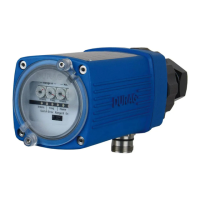3 Explosion protection
D−LX 200, D−LX 720 25
3.2.3 Temperature classes
Combustible gases or dusts are classified into temperature classes according to
their ignition temperature. The ignition temperature gives the maximum surface
temperature that the installed equipment is allowed to reach.
Electrical equipment that may be used in Ex-areas is classified and labeled in
accordance with the same temperature classes. The temperature class given
on the device must be the same or higher than the one of the explosive
atmosphere.
Of course, the surface temperature of the equipment is influenced by the
ambient temperature. Therefore the ATEX ambient temperature range (Ta)
that is given on the device (type label) must also be observed.
3.2.4 EPL Equipment Protection Level
The inclusion of Equipment Protection Levels (EPLs) for operating resources
represents a new alternative to the concept of zones for the choice of
equipment. It is mentioned here for information purposes. The risk of internal
ignition can be assessed in a better and more flexible way by means of a risk
assessment. Each zone can be assigned a precise Equipment Protection
Level without an additional risk assessment.
The following allocations for DURAG-equipment are relevant:
Table 3.2 DURAG-equipment EPL
3.3 Equipment with pressure proof encapsulation „Ex d“
These ignition protection categories are used for equipment groups
categories II 2G (Zone 1). Housings for equipment of this ignition protection
category are so robust that they withstand internal explosions without damage.
Construction measures prevent the explosion from being transferred to
potentially explosive atmospheres outside the equipment (tertiary explosion
protection).
Unavoidable gaps from the inside to the outside (e.g. between the housing
body and the sealing cover) may exist. They are constructed so narrow that
the flame fronts from an internal explosion are extinguished as they escape.
The surfaces of the gaps must not be cleaned with mechanical devices such
as wire brushes or abrasives. Even small scratches on the surface of the gap
represent serious damage that could lead to a flame escaping.
Components that seal or hold together these housings (e.g. O-rings, screws or
cable glands) are relevant to safety. For sufficient safety of cable glands into
the Ex d space, at least five flawless thread turns must be engaged. Com-
ponents relevant to safety must only be replaced by approved spare parts.
Only the use of these spare parts ensures that ensuing stresses are withstood.

